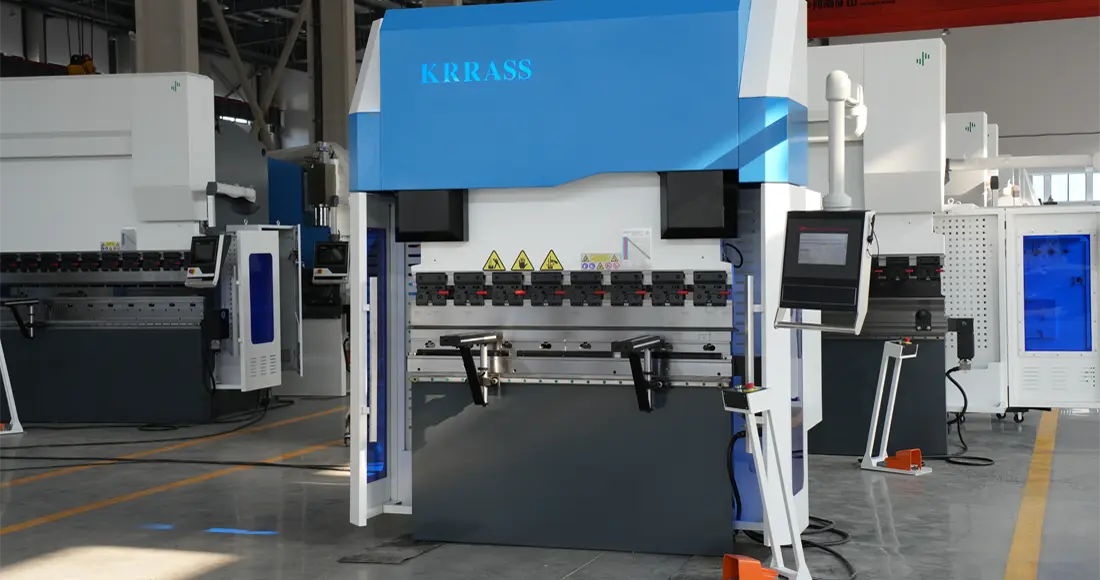In the modern era of manufacturing, the battle between electric press brakes and hydraulic press brakes is ever-evolving. Choosing the right one can make a significant difference in productivity, energy consumption, and overall costs. But how do you decide? This comprehensive guide delves deep into the intricate world of press brakes, elucidating the differences, advantages, and how to find the best press brake manufacturer.
- What are Press Brakes?
- About Press Brake Machines and Their Types
- Hydraulic VS Electric Press Brake
- How Choose the Right Press Brake for Your Business?
- Choosing the Best Press Brake Manufacturer
What is Press Brake?
In the world of metal fabrication, the press brake is an indispensable tool. But what exactly is a press brake, and why is it so crucial to the industry? Let's delve into the heart of this machinery.
A press brake, in its most fundamental sense, is a machine tool used to bend sheet and plate material, typically metal. By clamping the material between a matching punch and die, a press brake forms predetermined bends. These machines come in a variety of sizes and types, but two of the most prominent and discussed are the Electric Press Brake and the Hydraulic Press Brake.
Manufacturers, like our esteemed website, have dedicated countless hours of research, development, and innovation to ensure that press brakes are not only efficient but also safe and user-friendly. They've become an essential asset for businesses that require precise bending operations in their day-to-day manufacturing processes.
With the advent of technology, modern press brakes now incorporate advanced features, from computerized numerical controls to laser safety systems. These advancements streamline operations and ensure that the end products are of the highest quality.
In the grand scheme of metalworking, a press brake stands out as a beacon of precision and versatility. Whether you're crafting airplane parts or designing intricate metal artwork, the press brake is your go-to machinery. And as we move forward, we'll dive deeper into the nuances between electric and hydraulic press brakes, shedding light on which might be the best choice for your manufacturing needs.
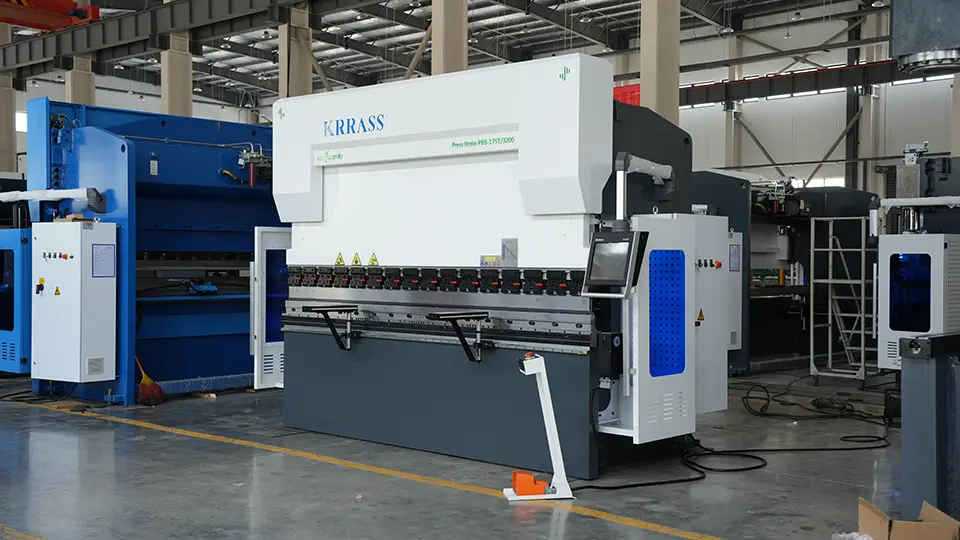
About Press Brake Machines and Their Types
The vast realm of metal fabrication is graced by various machinery, each with its unique purpose. Among them, press brake machines stand tall, known for their versatility and precision in bending operations. Let's explore these marvels of engineering further.
At its core, a press brake machine is designed to bend sheet metal into different shapes and angles. The bending process involves placing the sheet metal between a punch and die set, applying force, and creating a bend. Over time, technology and innovation have given birth to different types of press brake machines, each catering to specific needs and applications.
Hydraulic Press Brake
The Hydraulic Press Brake is renowned for its powerful and consistent bending capabilities. As the name suggests, these machines utilize hydraulic fluid to generate force, ensuring seamless and smooth operations. They are well-suited for large-scale industrial tasks due to their robust nature and ability to handle thicker materials.
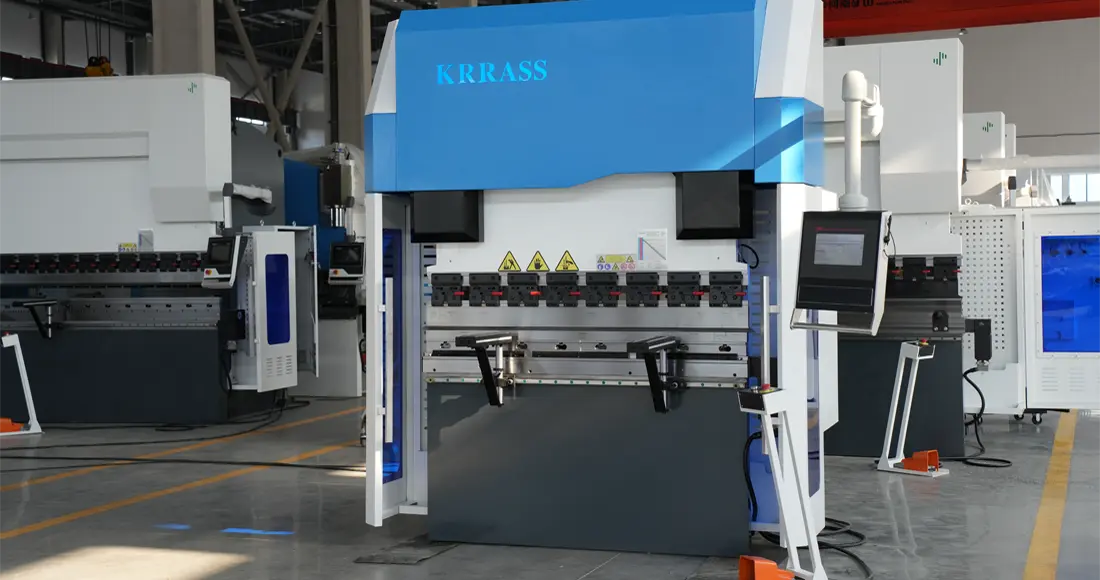
Electric Press Brake
On the other end of the spectrum, we have the Electric Press Brake. These machines harness the power of electric motors, leading to highly accurate and speedy bending operations. With fewer moving parts, they promise lower maintenance and a reduced carbon footprint, making them a favorite among eco-conscious manufacturers.
While both the hydraulic and electric variants have their merits, the choice often boils down to the specific requirements of the project at hand. Factors like production volume, material thickness, and budget constraints play a pivotal role in the decision-making process.
Beyond these primary types, the industry also sees a blend of manual, pneumatic, and servo-electric press brakes, each bringing its flavor to the table. As a leading press brake manufacturer, we pride ourselves on understanding these nuances, ensuring our clientele gets the machine that perfectly aligns with their needs.
Hydraulic VS Electric Press Brake
In the realm of metal bending and fabrication, the debate between hydraulic and electric press brakes continues to gain traction. Each has its unique strengths, challenges, and areas of application. In this section, we aim to dissect these two giants, exploring their core components, cost implications, efficiency, operational speed, accuracy, and environmental considerations.
Core Components of Press Brakes
The essence of a press brake lies in its components. While both hydraulic and electric press brakes serve the same primary function – bending metal – their core components differ substantially.
Hydraulic Press Brakes rely on a complex hydraulic system. This system comprises pumps, valves, and hydraulic oil, working in tandem to generate the force needed for bending. The pressure from the hydraulic fluid acts upon a piston, driving the machine's functioning.
Electric Press Brakes, conversely, operate using an electric motor and a series of belts or screws. The motor's rotational energy is converted to linear motion, enabling the bending process. The absence of hydraulic components makes their design somewhat streamlined.
Affordability
The cost consideration is paramount when making a business decision. When comparing hydraulic and electric press brakes, one should not just look at the initial purchase price. Daily operation and long-term maintenance costs play a significant role in determining the true cost of ownership.
Hydraulic press brakes might seem cost-effective initially, but their long-term upkeep can be quite intensive. Regular maintenance tasks, such as fixing leaks, replacing seals, and changing oil and filters, add to the total cost of ownership. Furthermore, the constant energy consumption of the gear pump, even during non-operational periods, can inflate the operational expenses. While energy-saving enhancements can be introduced, they further contribute to the cost.
On the other hand, electric press brakes might demand a higher initial investment, but their operational and maintenance costs tend to be lower, which can translate to cost savings in the long run.
Efficiency and Power Consumption
The efficiency of your machinery directly affects your production rate and energy bills. While it's been noted that electric press brakes may require double the effort compared to hydraulic ones for similar results, they emerge as winners in energy efficiency. This is primarily because hydraulic press brakes, due to their design, need to run continuously, leading to excessive energy consumption.
Electric press brakes, on the other hand, stand out with their power-efficient designs. Their pumps operate only when the machine is actively working, ensuring minimal wastage of energy.
Speed of Operations
The speed of machinery can make a significant difference in meeting production targets. Hydraulic press brakes, driven by oil-powered motors, often lag in terms of rapid acceleration and deceleration. While their approach speed might be faster than electric press brakes, the overall output speed is slower due to the inherent nature of hydraulic systems.
Electric press brakes, in contrast, benefit from direct drive systems, translating to higher bending speeds and quicker cycle times, maximizing productivity.
Accuracy
Precision is a hallmark of high-quality metal fabrication. In this arena, electric press brakes excel. Renowned for their impeccable accuracy, electric press brakes can achieve precision as minute as 1 micron (0.000079 inches). This is a stark contrast to hydraulic press brakes, which typically offer precision around 10.16 microns (0.0004 inches).
Such levels of accuracy ensure that the final product meets exact specifications, minimizing wastage and rework, and ultimately leading to satisfied customers.
Environmental Factors
Today's businesses are under increasing pressure to adopt sustainable and eco-friendly practices. In the comparison between hydraulic and electric press brakes, the latter emerges as the clear environmentally-friendly choice.
Hydraulic press brakes, which remain powered on throughout the day, not only consume a significant amount of energy but also contribute to noise pollution. Electric press brakes, conversely, are operational only when in use, ensuring minimal energy wastage. Their operations are also considerably quieter, with the primary noise being the spinning of the ball screws.
A significant environmental concern with hydraulic systems is the potential for oil leakages and spills. These not only pose risks for the immediate workspace but can also lead to broader environmental hazards, affecting local communities.
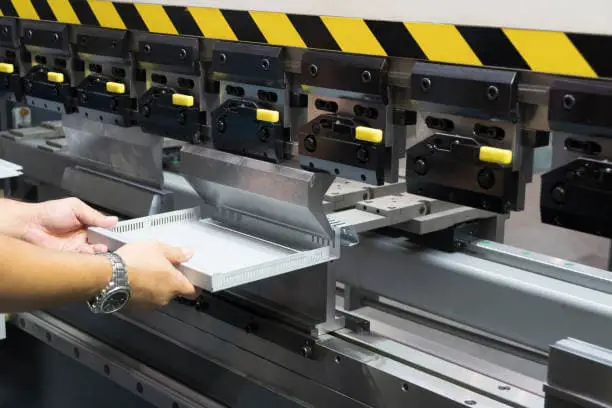
How to Choose the Right Press Brake for Your Business?
Choosing the right press brake can be a game-changer for your business, directly affecting productivity, profitability, and customer satisfaction. Whether you're leaning towards an electric press brake or a hydraulic one, certain key factors should guide your decision.
1. Understand Your Business Needs
Before diving into the specs and features of different press brakes, take a step back and assess your business's specific needs. What materials are you working with? What is the required bending length and thickness? Are you catering to custom, small-scale jobs, or mass production?
2. Budget Considerations
While it's tempting to opt for the latest and most advanced machinery, it's vital to balance the cost of the press brake with its potential ROI. Consider both the initial investment and long-term operational costs.
3. Efficiency and Speed
For businesses where turnaround time is critical, the speed of operations can be a deciding factor. Electric press brakes tend to have a faster bending speed, which might be more suitable for high-volume orders.
4. Accuracy and Precision
If your business caters to industries where even a micron's deviation can be critical, like aerospace or medical equipment manufacturing, the superior accuracy of electric press brakes might be more appealing.
5. Environmental and Sustainability Goals
Companies today are increasingly focusing on sustainable practices. If reducing your carbon footprint and adopting eco-friendly operations is a priority, electric press brakes, with their reduced energy consumption and lower noise levels, might be the preferred choice.
6. After-Sales Service and Support
It's crucial to partner with a press brake manufacturer that offers robust after-sales service, training, and technical support. The availability of spare parts, timely maintenance, and prompt customer support can significantly impact the machine's uptime and your business's productivity.
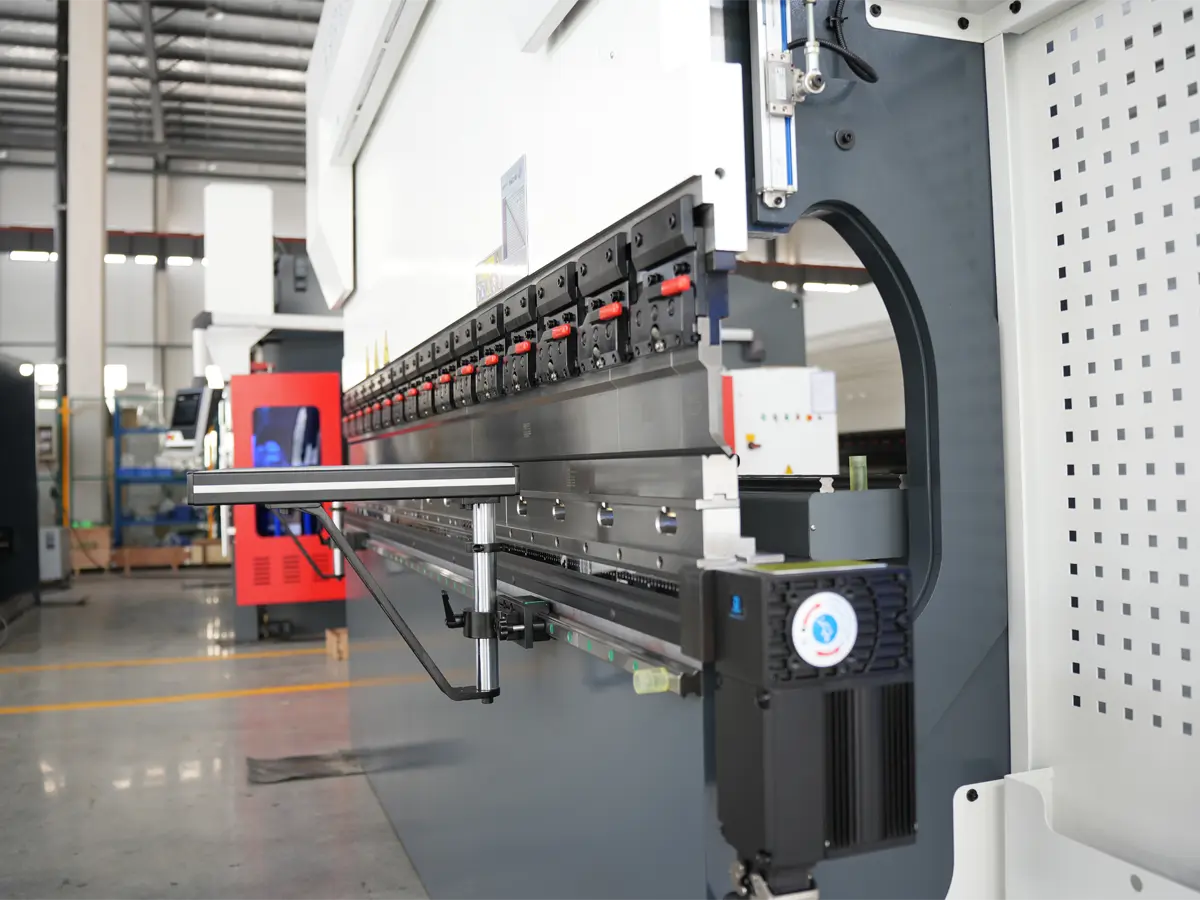
Choosing the Best Press Brake Manufacturer
Finding the right press brake manufacturer is not just about the machine but also about building a long-term, beneficial partnership. Your choice of manufacturer can significantly impact the efficiency, productivity, and profitability of your operations. Here's a comprehensive guide on how to make the best choice.
1. Reputation and Track Record
Begin your search by looking at manufacturers with a solid reputation in the industry. A company with a track record of reliability, quality, and innovation is more likely to provide a machine that meets your needs.
2. Technological Advancements
Opt for manufacturers that are at the forefront of technology. Those who invest in R&D and consistently update their machinery models to incorporate the latest technology will offer products that ensure efficiency and precision.
3. Customer Support and After-Sales Service
The relationship with your press brake manufacturer shouldn't end post-purchase. Prioritize those who provide strong after-sales support, training programs, and efficient customer service to address any issues or concerns you might have.
4. Availability of Spare Parts
A machine is only as good as its parts. Ensure that the manufacturer has a readily available stock of spare parts. This not only reduces downtime but also indicates the manufacturer's commitment to long-term service.
5. Testimonials and Reviews
Research what other businesses are saying about the manufacturer. Real-world testimonials and reviews can give insights into the quality of the machinery, the reliability of the manufacturer, and the satisfaction of past clients.
6. Price and Financing Options
While quality should be a priority, it's also essential to consider the financial aspect. Opt for a manufacturer that offers competitive pricing without compromising on quality. Also, explore if they provide favorable financing or lease options.
In conclusion, choosing the best press brake manufacturer is a crucial decision that requires thorough research and careful consideration. By focusing on these key factors and partnering with a reputable manufacturer, you can ensure that your investment brings value, efficiency, and growth to your business.
Conclusion
In the complex realm of manufacturing, understanding the nuances between electric and hydraulic press brakes can set your business on a path to unprecedented efficiency and growth. While both have their merits, your individual business needs will determine the best fit. And when it comes to sourcing the highest quality press brakes, look no further than China's leading hydraulic press brake and electric press brake manufacturer, Krrass. With their unmatched expertise and commitment to excellence, your manufacturing success is just around the corner.
Read More:
How to Calculate the Bending Allowance of Press Brake
Exploring the World of CNC and CNC Press Brakes
How to Choose the Right Press Brake Tool for Your Press Brake
